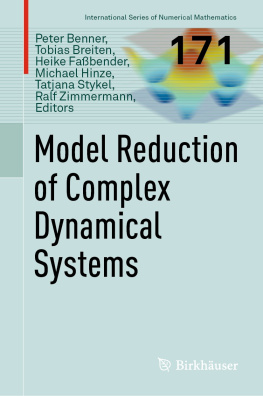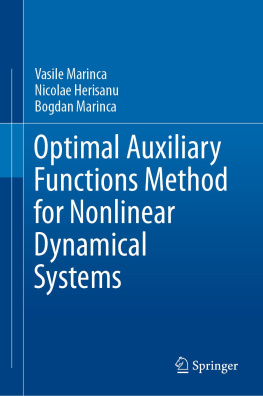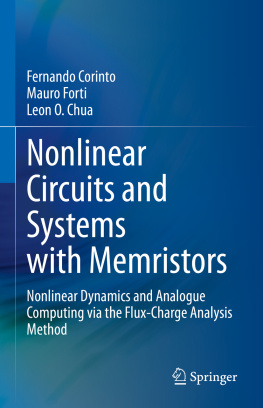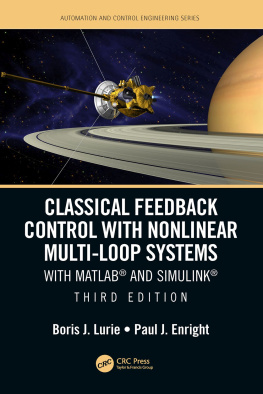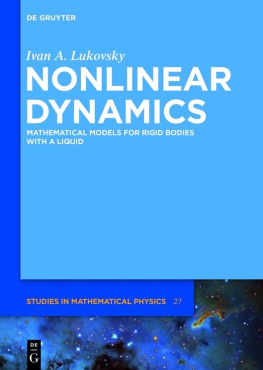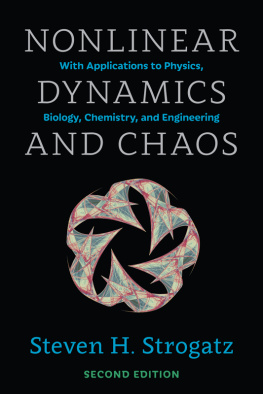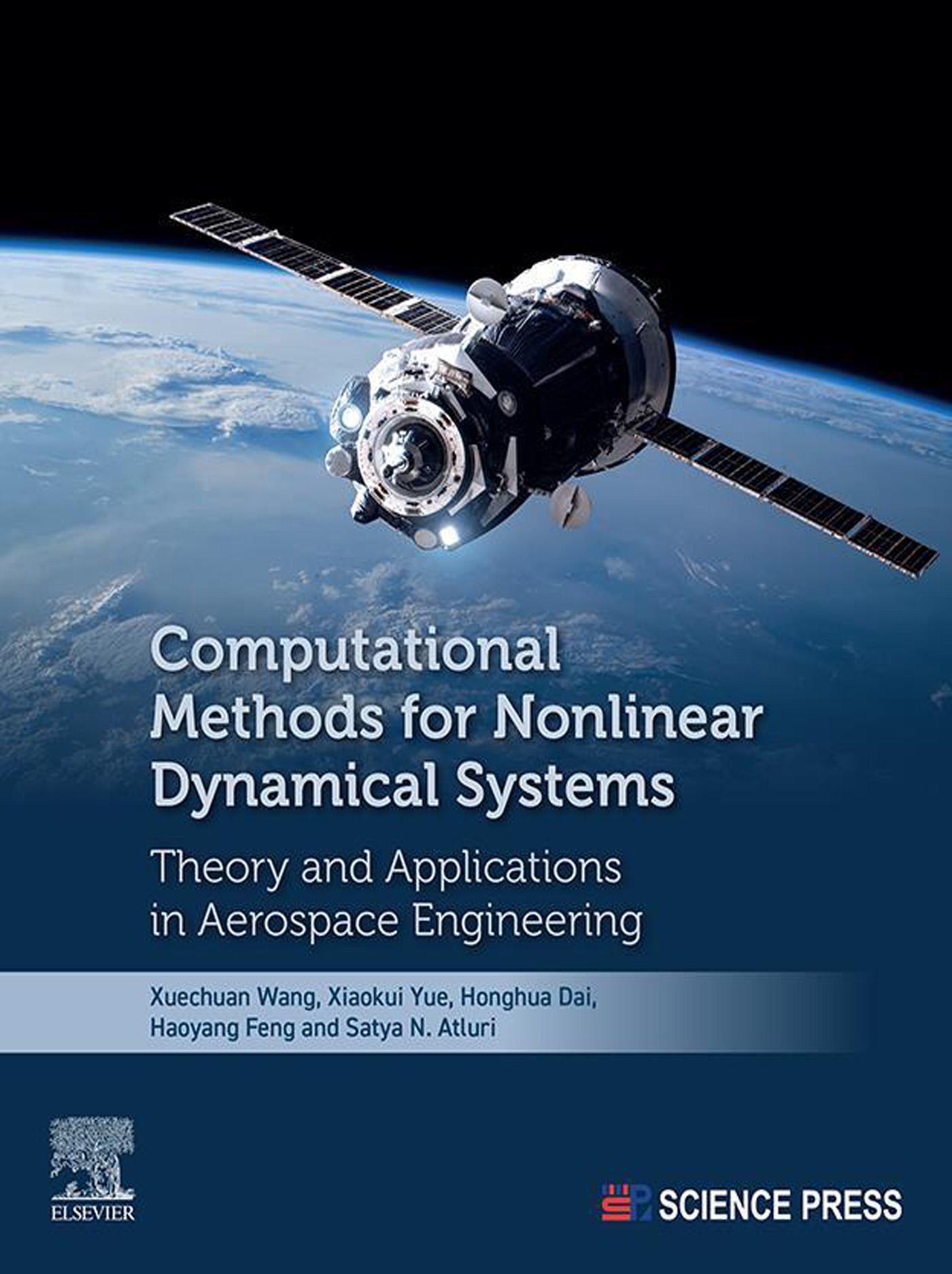Table of Contents
List of tables
- Tables in Chapter 2
- Tables in Chapter 3
- Tables in Chapter 4
- Tables in Chapter 6
- Tables in Chapter 7
- Tables in Chapter 8
List of illustrations
- Figures in Chapter 2
- Figures in Chapter 3
- Figures in Chapter 4
- Figures in Chapter 5
- Figures in Chapter 6
- Figures in Chapter 7
- Figures in Chapter 8
Landmarks
Table of Contents
Computational Methods for Nonlinear Dynamical Systems
Theory and Applications in Aerospace Engineering
Xuechuan Wang
School of Astronautics, Northwestern Polytechnical University, Xi'an, Shaanxi, China
Xiaokui Yue
School of Astronautics, Northwestern Polytechnical University, Xi'an, Shaanxi, China
Honghua Dai
School of Astronautics, Northwestern Polytechnical University, Xi'an, Shaanxi, China
Haoyang Feng
School of Astronautics, Northwestern Polytechnical University, Xi'an, Shaanxi, China
Satya N. Atluri
Department of Mechanical Engineering, Texas Tech University, Lubbock, TX, United States

Copyright
Elsevier
Radarweg 29, PO Box 211, 1000 AE Amsterdam, Netherlands
The Boulevard, Langford Lane, Kidlington, Oxford OX5 1GB, United Kingdom
50 Hampshire Street, 5th Floor, Cambridge, MA 02139, United States
2023 China Science Publishing & Media Ltd. Published by Elsevier Inc. All rights reserved.
No part of this publication may be reproduced or transmitted in any form or by any means, electronic or mechanical, including photocopying, recording, or any information storage and retrieval system, without permission in writing from the publisher. Details on how to seek permission, further information about the Publishers permissions policies and our arrangements with organizations such as the Copyright Clearance Center and the Copyright Licensing Agency, can be found at our website: www.elsevier.com/permissions.
This book and the individual contributions contained in it are protected under copyright by the Publisher (other than as may be noted herein).
Notices
Knowledge and best practice in this field are constantly changing. As new research and experience broaden our understanding, changes in research methods, professional practices, or medical treatment may become necessary.
Practitioners and researchers must always rely on their own experience and knowledge in evaluating and using any information, methods, compounds, or experiments described herein. In using such information or methods they should be mindful of their own safety and the safety of others, including parties for whom they have a professional responsibility.
To the fullest extent of the law, neither the Publisher nor the authors, contributors, or editors, assume any liability for any injury and/or damage to persons or property as a matter of products liability, negligence or otherwise, or from any use or operation of any methods, products, instructions, or ideas contained in the material herein.
ISBN: 978-0-323-99113-1
For Information on all Elsevier publications visit our website at https://www.elsevier.com/books-and-journals
Publisher: Glyn Jones
Editorial Project Manager: Naomi Robertson
Production Project Manager: Manju Paramasivam
Cover Designer: Mark Rogers
Typeset by MPS Limited, Chennai, India

Preface
This book aims to introduce many recently developed high-performance computational methods for strongly nonlinear dynamical systems and their applications in practical engineering problems for graduate students and researchers. The study of computational methods covers a broad range of mathematical problems emerging from science and engineering. Leveraging the wide usage of computers, it penetrates most, if not all, modern disciplines. Even sociology and politics are benefiting from computational methods in their state-of-the-art branches, such as social network dynamics. Nevertheless, the most significant developments of computational methods concentrate on applied mathematics and mechanics. The need for simulations in solid mechanics, fluid mechanics, multibody dynamics, and multiphysics has spawned off-the-shelf software that integrates ready-to-use computational methods. New methods are continuously being proposed, improved, and tested to achieve better performance.
The foundation of the computational methods that we use today was laid in the age of Isaac Newton and Leonhard Euler. Using the concepts of differentiation and the Taylor series, the finite difference method was developed. Its early history is marked by the Euler method. Hundreds of variants have been proposed, including the trapezoidal method, the RungeKutta method, and the Newmark method. Some of these methods have been used as standard numerical solvers in commercial software (MATLAB, ADAMS, ABAQUS, etc.). Moreover, it was found that the finite difference method can be introduced in a more general way via a weighted residual method, from which the finite element, finite volume, and boundary element methods can be derived. A practical framework of a weighted residual method was built in the 1950s via the development of the finite element method. It quickly stimulated the development of computer-aided engineering and design technology. Alongside that, the asymptotic methods were developed from the early works by Henri Poincar in his study of three-body problems. The asymptotic methods are very useful when the functional of the problem to be solved is available; therefore they are often applied in weakly nonlinear systems. The best-known asymptotic method for solving nonlinear differential equations is the perturbation method. In earlier times, the use of the perturbation method was limited to astronomical calculations. Scholars such as Laplace and Lagrange used it to investigate the perturbed motion of planets around the sun. Then Urbain Le Verrier successfully predicted the existence of the planet Neptune with this method. After this remarkable event, the application of the perturbation method was gradually broadened to the more general field of nonlinear mechanics.
By contrast, a strongly nonlinear dynamical system possesses complicated behaviors that cannot be found in linearized or weakly nonlinear systems. The difficulties in dealing with strongly nonlinear dynamical systems are twofold: first the simulation of dynamical responses and then the dynamical analysis. Both rely heavily on nonlinear computational methods to tackle the deterioration of convergence, accuracy, and efficiency, which arise from strong nonlinearities. It is a general and interdisciplinary problem to deal with nonlinearity, so we will not discuss it extensively in this book but will focus on dynamical systems that can be modeled or reduced to ordinary differential equations. Although there are numerous finite difference methods for solving ordinary differential equations, they are far from being satisfactory in theoretical analysis and engineering application in strongly nonlinear problems. It is a key point of this book to introduce useful tools to tackle computational difficulties in nonlinear dynamical systems. The solutions for nonlinear dynamical systems are broadly divided into two categories: periodic and transient (nonperiodic). For periodic problems the methodology of a new time domain collocation method is presented. Its equivalence to the high-dimensional harmonic balance method is explained in detail. It shows superiority to other methods in approximating subtle periodic responses of nonlinear dynamical systems. For transient responses the methodology of local variational iteration is presented. It provides possibilities for a new category of numerical methods by combining the principle of a weighted residual method and an asymptotic method. Compared with finite difference methods, the local variational iteration method can achieve much higher computational accuracy and efficiency by using very large step sizes. Applications of these methods are illustrated through examples in orbital mechanics and structural mechanics. The methodologies that are introduced in this book are expected to find applications in a broader range of nonlinear systems.



